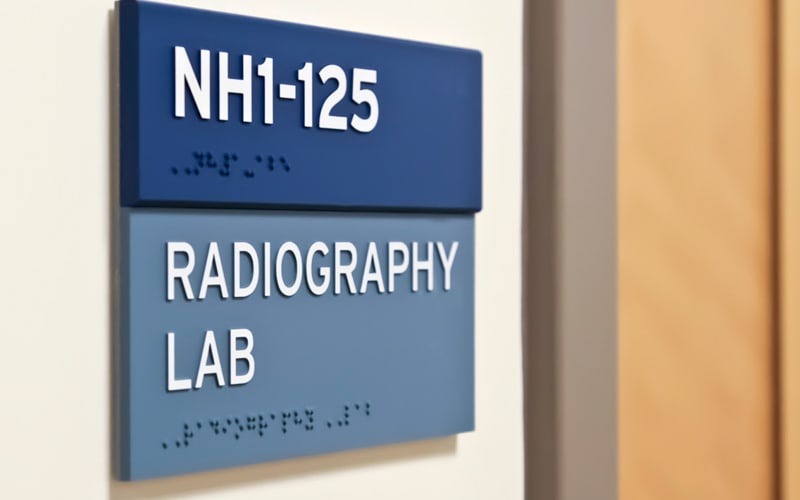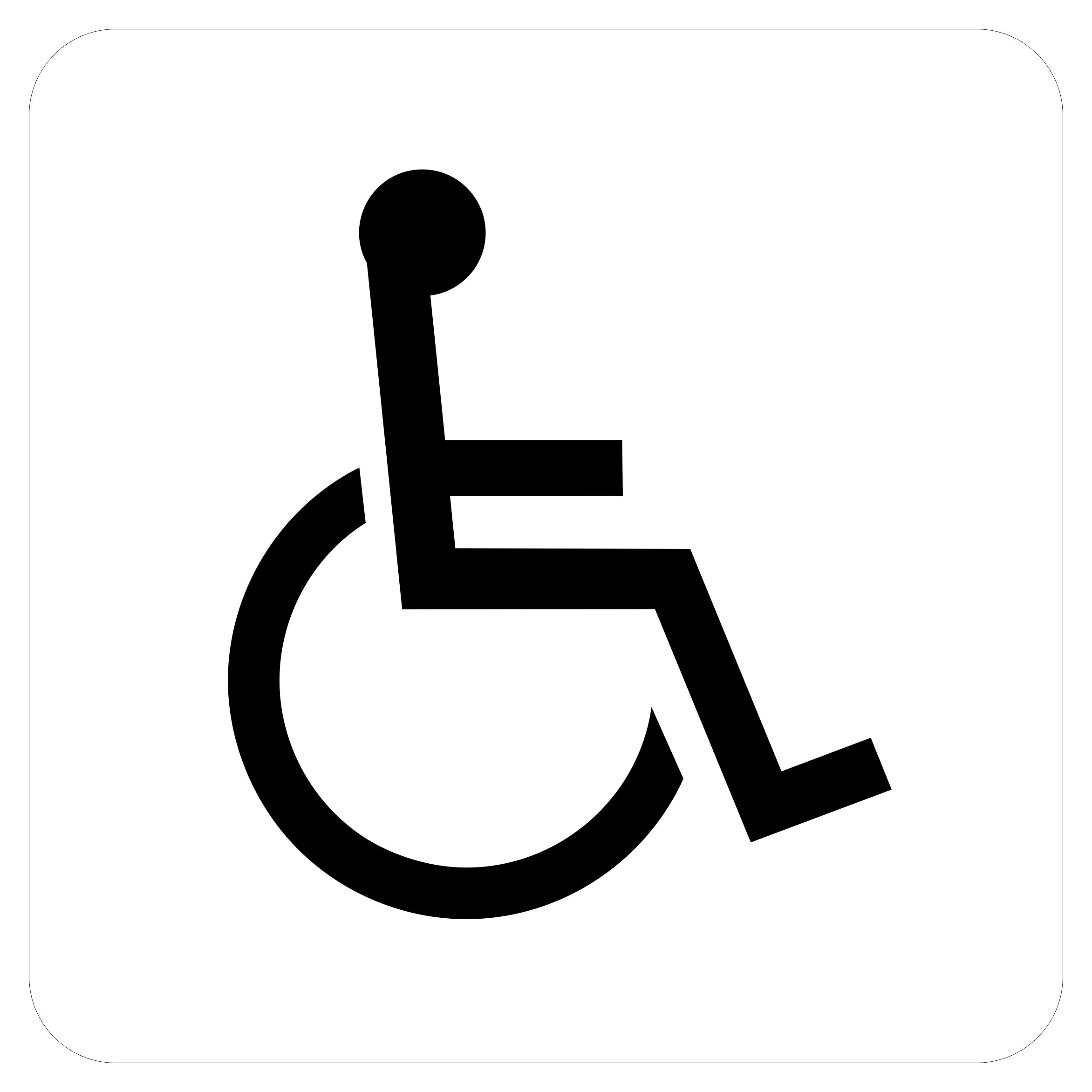Personalizing ADA Signs to Fulfill Your Particular Demands
Personalizing ADA Signs to Fulfill Your Particular Demands
Blog Article
ADA Signage: Ensuring Ease Of Access and Compliance in Public Spaces
ADA signs plays an essential duty in assuring access and compliance within public spaces, significantly adding to a comprehensive setting for people with specials needs. By adhering to ADA criteria, signs not just promotes navigation however also highlights a company's commitment to diversity and equal rights. As we explore the subtleties of ADA signs, from tactile functions to make ins and outs, it's critical to consider how these components coalesce to maintain the legal rights of all individuals. What are the usual pitfalls companies face in keeping conformity, and just how can future fads in signs remain to drive access forward?
Relevance of ADA Signs
In contemporary society, the significance of ADA signage expands past simple conformity with lawful mandates to symbolize a dedication to inclusivity and accessibility for all individuals. These indications are vital in producing settings where people with specials needs can navigate public spaces with the same simplicity and freedom as those without specials needs. By supplying clear and standardized info, ADA signs makes certain that everybody can access centers, solutions, and information without barriers.
The importance of ADA signage hinges on its capacity to improve the lifestyle for people with disabilities by promoting equal access. It gets rid of the obstacles that may otherwise prevent their ability to participate fully in community life. Furthermore, these indications serve as noticeable indicators of a company's dedication to diversity and equality, showing wider social worths that promote the legal rights and self-respect of all people.
Furthermore, ADA signage plays an essential duty in public security. By guiding individuals to leaves, washrooms, and various other crucial centers, it makes sure that all individuals, no matter physical capability, can leave securely during emergency situations. In recap, ADA signs is not simply a regulatory need but an effective tool for fostering a inclusive and equitable society.
Secret Elements of Conformity

Placement is vital; indications must be installed in locations that are obtainable and conveniently noticeable. Generally, signage must be mounted in between 48 and 60 inches from the ground to guarantee access for both standing and mobility device users. Tactile aspects, such as Braille, are crucial for individuals with visual impairments, offering important information in a non-visual format.
High-contrast colors in between the message and history are required to improve readability for people with low vision. The ADA mandates particular comparison ratios to make sure quality. Furthermore, character size is an essential factor to consider, with minimum elevation needs determined by the checking out distance to make certain readability from various angles.
Layout Considerations for Availability
Creating obtainable signs calls for a thorough approach to guarantee it fulfills the needs of all customers, particularly those with impairments. This entails considering various style elements that improve readability and use. Trick aspects include the choice of font, color contrast, and tactile features. Typefaces ought to be sans-serif, with simple and clear letterforms, to promote easy analysis. The size of the text is similarly important, with ADA standards suggesting a minimum height based upon viewing distance to make certain legibility.
Contrasting shades between message and history are essential for exposure, especially for people with aesthetic problems. A high comparison ratio helps distinguish the message from its history, boosting readability under different lights conditions. Furthermore, tactile components, such as Braille and raised personalities, are vital for people who are blind or have reduced vision. These components must be found at a regular height and position to guarantee simple accessibility and comprehension.
Moreover, the positioning of signage plays a significant role in availability. Indications must be mounted in places that are conveniently obtainable and unblocked. Guaranteeing that signs is installed at proper elevations and angles allows all customers, including those utilizing mobility devices, to engage with them properly.
Usual Blunders to Avoid

An additional widespread mistake is the inaccurate placement of signage. ADA guidelines specify precise height and location requirements right here to guarantee that indicators are conveniently visible and obtainable by all individuals, consisting of those using mobility devices. Neglecting these guidelines not just hinders ease of access however additionally risks non-compliance with legal requirements.
Additionally, insufficient comparison in between text and background is a frequent oversight. Appropriate contrast is necessary for readability, especially for people with reduced vision. Developers in some cases pick shades that are aesthetically appealing however do not have the needed comparison, providing the message tough to recognize.
Last but not least, some developers stop working to integrate tactile aspects, such as Braille, which are important for individuals who are blind. Leaving out these features not just results in non-compliance with ADA policies but additionally restricts accessibility for a section of the populace that relies upon responsive details.
Future Trends in Signs
Innovations in innovation and boosting awareness of inclusivity are shaping the future patterns in signs design. Digital signage, for instance, is evolving to include real-time updates and interactive attributes, which can be critical in supplying dynamic info in public areas.
Another arising trend is the application of increased truth (AR) to improve user experience. AR-enabled signs can overlay digital information onto the physical environment, offering aesthetically impaired individuals with auditory hop over to these guys or haptic responses. ADA Signs. This technology not only improves accessibility but likewise develops an interesting experience for all users
Sustainability is also a significant factor affecting signs patterns. Green products and energy-efficient lighting options are being prioritized to line up with international ecological objectives. Improvements in materials science are leading to the development of even more sturdy and weather-resistant signs.
Conclusion
ADA signage plays a crucial role in ensuring access and compliance within public areas by integrating responsive elements, high-contrast shades, and strategic placement. The adherence to ADA standards not only assists in risk-free navigating for individuals with impairments however likewise symbolizes a company's dedication to variety and inclusivity. By avoiding typical blunders and welcoming future fads, public areas can continue to advance these values, making certain that the rights and dignity of all people are appreciated and supported.
ADA signs plays this an essential duty in assuring accessibility and conformity within public rooms, significantly adding to a comprehensive environment for people with handicaps. As we check out the nuances of ADA signs, from tactile features to develop details, it's important to consider exactly how these components coalesce to maintain the legal rights of all users.In contemporary society, the value of ADA signs prolongs beyond simple compliance with lawful mandates to symbolize a commitment to inclusivity and availability for all people. By offering standard and clear details, ADA signage ensures that every person can access centers, services, and information without obstacles.
ADA signs plays a vital duty in assuring availability and conformity within public spaces by integrating tactile components, high-contrast colors, and tactical placement. (ADA Signs)
Report this page